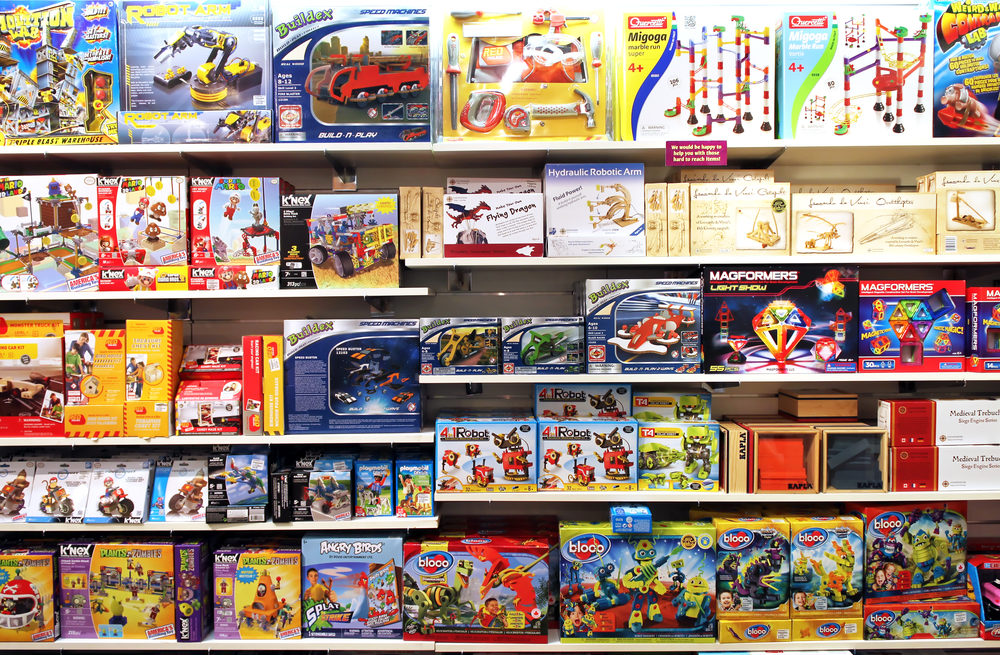Report Highlights Biggest Toy Dangers Of 2020 Holiday Season

As the holiday shopping season gets underway, a consumer research group is warning about the risks associated with several popular toys that are on the market, which may pose a variety of injury risks for small children.
The U.S. Public Interest Research Group (PIRG) released their 35th Annual “Trouble in Toyland” safety report this month, highlighting several toys available on the first- and second-hand markets which contain hidden toxins and small pieces that may pose risks which contribute to thousands of toy-related injuries annually.
This year’s report focuses on toys which present choking hazards for children, which is a particular risk as many parents and caregivers in the United States are now juggling multiple responsibilities, while working from home due to the ongoing COVID-19 pandemic. A lack of support or close supervision of children during play time may exponentially increase the risks associated with certain types of toys.

Did You Know?
Millions of Philips CPAP Machines Recalled
Philips DreamStation, CPAP and BiPAP machines sold in recent years may pose a risk of cancer, lung damage and other injuries.
Learn MoreThe consumer group is warning parents to avoid a series of toys that includes VTech Drill & Learn Toolbox and the popular Calico Critters flocked animal toys, which are marketed as safe for children three years of age and younger, yet contain accessory pieces that fall into the U.S. Consumer Product Safety Commissions (CPSCs) “small part” description.
According to the report, the CPSC classifies anything as a “small part” if it fits into the agency’s test cylinder, which is 2.25 inches long and 1.25 inches wide. The sizing scale mimics the approximate size of the throat of a child less than three years of age, indicating anything of that size or smaller may be swallowed or become stuck in the child’s throat.
The report specifically highlights the risks of the popular Calico Critters flocked animal toys which are available on Amazon.com, Walmart, Target and many other popular retailers, despite a reported 2018 choking death of a Northern New Mexico toddler and a near choking death of a Utah toddler.
In both cases, the parents gave their children the Calico Yellow Labrador Twins toys that are equipped with a detaching tiny plastic pacifier. Both children suffered a choking incident after accidentally swallowing the pacifier, ultimately resulting in the death of the New Mexico toddler.
The surviving family of the New Mexico toddler currently have a lawsuit pending in the U.S. District Court in Albuquerque, alleging the manufacturer of mislabeling the toy collection as suitable for young children, which could cause them to choke on the half-inch tall pacifier.
Additional choking hazards outlined in PIRG’s report include books and other products made of paper that can be torn into small pieces, as well as crayons, chalk, pencils, pens, and cay that can break into small pieces that may pose choking hazards.
Similar to last year’s warning, the report warns about the dangers associated with slime toys, which were found to contain upward of 75 times the allowable levels of boron for European standards. Researchers indicate that children who ingest slime products that contain high levels of boron are prone to experiencing nausea, vomiting, and other long-term damages. PIRG advises parents and caregivers to contact a poison control center immediately and take their child to the emergency room if they begin to show these symptoms after playing with slime products.
Additional potentially toxic toys and children’s products identified in the report include children’s makeup, jewelry and fidget spinners which were all found to contain dangerous levels of either lead, cadmium or talc, that could cause long term cognitive impairment issues when over-exposed to the chemicals.
In this year’s report, the group is also highlighting of dangers associated with toys that may be too loud and cause damage to a child’s hearing. The group advised parents to always test toys with sound prior to allowing a child to play with them, and adjust the sound as necessary or remove the batteries to limit excessive audio that could cause hearing damage.
The group called for stronger safety standards and more effective recall processes, suggesting the U.S. Consumer Product Safety Commission (CPSC) recall system require companies to directly notify customers through retailer partnerships, engage in recall marketing campaigns equivalent to those that sold the product, and directly notify child care centers of recalled products potentially used in their facilities.
Previous research has shown toy-related injuries have been on an upward trend over the last two decades, with more than a 40% increase in related injuries from 1990 to 2011. In 2015 alone, more than 250,000 toy-related injuries were reported, while 72 children died from toy-related incidents between 2010 and 2015.
Get more articles like this sent directly to your inbox.
"*" indicates required fields





0 Comments